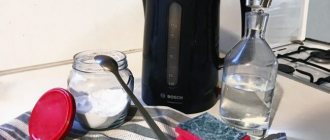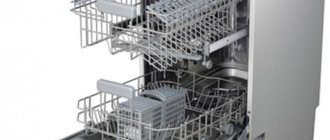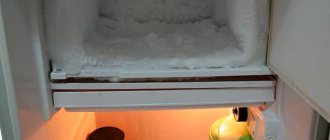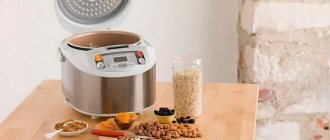Scale on the inner walls of the kettle does not add to the aesthetics of the container and, above all, affects its operation, water quality and health. Fortunately, there are several simple and inexpensive ways to help get rid of this problem.
Scale does not spare any kettle - neither traditional nor electric. The culprit is the hard water that flows through the faucets. Meanwhile, you can easily extend its service life if you clean it of plaque at least once a month. However, before you go to the store to buy a special product, you should try a cheaper and more natural method of removing scale from the inner walls of the container.
Well, how do you explain this?
Scale is an unpleasant phenomenon; it negatively affects not only the operation of the device itself, but also your health, promoting the formation of sand and kidney stones, as well as worsening the functioning of the gastrointestinal tract.
With such pollution, the unit spends more energy, as a result of which utility costs increase, and, as we know, thrifty housewives do not need extra expenses.
Deposits of this kind do not stand on ceremony both with electric kettles and with their traditional versions, heated in the old fashioned way by a fire from a stove or from a fire (yes, there are people who still have ordinary kettles, and, moreover, they boil them!) .
Because of lime, water becomes unpleasant to drink - it acquires a specific taste, and pieces of limestone float in it, and a thick white sediment, similar to dust, constantly accumulates at the bottom, which has to be poured out periodically.
Good housewives try to extend the life of their teapots by cleaning them regularly.
But don’t rush to run to the nearest hardware store for expensive goods, because you already have everything at hand!
Why cola?
Coca-Cola meets several criteria that are relevant when selecting a product that removes white plaque:
- Safety - Compared to special cleaning chemicals, which are mostly poisonous, Coca-Cola contains no dangerous impurities and is absolutely safe.
- Lack of odor - unlike vinegar, the drink does not have any specific unpleasant aroma, which after cleaning will have to be ventilated and eliminated.
- Does not damage the surface - exposure to cola does not leave any traces on the object - the surface is not damaged or corroded, the enamel remains intact and unharmed.
- Affordable - any housewife can afford it, since its price is no more than $1 (a large bottle in stores is about 60-65 rubles). In this respect, the famous lemonade outperforms many of its counterparts sold in the household goods department.
Is it possible to boil cola in a kettle?
The carbonated drink was created in the 19th century. Its chemical formula has become the basis for many myths. In addition to its direct purpose, cola is used to clean various surfaces. The product is considered safe for use for household purposes.
The method has the following advantages:
- absence of a sharp unpleasant odor;
- budget and accessibility;
- gentle effect on the coating of dishes;
- safety.
Among the disadvantages of cleaning kitchen utensils with Coca-Cola are:
- possible respiratory irritation;
- effectiveness only with a small amount of flying time;
- Use only on certain types of coating.
Important! Greater efficiency can be achieved by cleaning the resulting sediment with acids.
We recommend reading: How to remove brilliant green from linoleum
What happens if you boil cola in a kettle?
The carbonated drink was not created for household use. However, its unique composition helps dissolve the plaque that forms with constant use of the kettle.
To clean the device, you need to boil a drink in it.
How to clean
First, let's prepare the tools:
- Our kettle;
- Coca-Cola (amount depending on the size of the pan);
- Brush or sponge.
Next, follow the steps given in the list:
- Fill 2/3 of the container with cola.
- Turn on the device and boil thoroughly.
- Now we need the popular lemonade to react. To do this, let the filled container sit for about half an hour.
- After this, pre-prepared brushes and sponges are used - we use them to scrub off the remaining residue, without leaving a single stain.
- Don't forget about the spout, it is the most inaccessible place, we go through it most carefully.
- If necessary, we can repeat the procedure again. If the contamination is very significant, let the vessel and cola spend the night together and produce a reaction.
- The smell can only be removed thanks to lemon juice - to get rid of it, simply boil the unit using the substance.
To enhance the effect, you can add another secret ingredient - soda. After boiling, you will need to leave the mixture for at least 40–50 minutes, and preferably for a whole hour.
But! Soda has one caveat - it leaves a specific aftertaste, so the next step is to boil it without soda a couple more times.
Is it true that Coca-Cola dissolves scale?
Yes it's true. Why does this work? Carbonated drinks contain acids - phosphoric acid, citric acid, ascorbic acid - which, when they come into contact with deposits of mineral salts, destroy them. Heating, duration of exposure and concentration of acids enhance this process.
What dishes can be cleaned with cola? This method is suitable for stainless steel, glass, electric kettles with a disk heater.
You cannot use Coca-Cola for:
- enamel coatings;
- light plastic;
- teapots with open spiral.
The fact is that colored drinks can stain the inner surface of the dishes. And the layer of sediment on the spiral is usually thick - cola will not be enough to wash it completely. After cleaning, the remaining salt deposits will turn brown, which will not add any benefits to the tea.
Carry out prevention
To reduce the risk of scale formation, preventive actions are important:
- Every time after boiling, rinse the dishes, this will slow down the process of the formation of new growths.
You don't have to use expensive products! To perform the most complex actions and remove severe stains, you will need the simplest products and additives.
- We advise you to choose traditional methods with less dangerous chemical components, this will help solve our problem and will not have a negative impact on your health, and the dishes will look their best, both inside and out!
Recommendations for preventing scale formation
Despite the fact that scale formation in kettles is an inevitable process, it can be prevented if you use a few simple tips:
- It is not advisable to boil water again;
- It is better to pour a little cold water into the kettle after each use;
- try to clean the dishes from plaque as often as possible;
- You can use a slice of lemon after boiling.
Of course, such methods will not help to permanently get rid of the layer that forms on the dishes, but they will help keep them clean. This will also protect it from overheating and damage.
How to get rid of plaque in a kettle?
Another carload of advice
Clean as often as possible. However, it is best to use natural remedies that do not include toxic substances.
This approach is ideal if you want to forget about white plaque altogether.
Another option that is definitely worth considering is filters. They will remove sediment and improve water quality.
- Do not immediately write off the unit in which you see lime. Try to provide him with careful care and take preventive measures.
- Don’t set a goal to buy up the entire shelf of chemicals in the household goods department - they also have their drawbacks, including a bad effect on health if the user suddenly doesn’t wash the device properly after using it.
- Rely on the experience of your grandmothers - try to use simple folk methods more.
- Not only Cola can help deal with lime on the walls. Acetic and citric acid have a similar effect.
If your goal is to get rid of deposits once and for all, then there is one method that will help with this - a magnetic converter.
It consists of a tube mounted into a heating pipe and contains a magnet. The magnetic field, which is formed through the influence of the device, prevents the deposition of salts.
It breaks the bonds between calcium ions, H2O dipoles and the acid residue. It is easy to use and inexpensive.
What items is the converter used for?
It can be used to remove deposits in boiler and pumping equipment, in heating devices (including geysers and boilers), in washing machines and dishwashers.
It is installed as an element in the water supply system.
The converter has several important features that can affect the operation of the equipment:
- Experts recommend installing such an invention only on cold water supply pipes. What's wrong with hot? The magnetic transducer is not capable of operating at high temperatures.
- The device also reacts to the speed and direction of fluid flows, and to stagnation.
- Housewives are advised to use an electromagnetic option for greater efficiency; this is a universal invention that works at any temperature, with much less energy consumption.
Cleaning methods
Store-bought anti-scale products
Housewives have a wide range of products in their arsenal that will remove unwanted scale.
Household chemicals
Stores sell powders, tablets, and liquids for cleaning teapots and other appliances. They are based on soda and acids. The means are used according to the same principle, regardless of the type:
- Fall asleep or pour the product into the kettle.
- Fill with water.
- Boil.
- Remove plaque with a sponge.
- Rinse.
Note! After the procedure, it is recommended to boil the water about 5 times to completely wash away any remaining harmful substances. The disadvantages of household chemicals are their high cost and unnaturalness.
Folk remedies
Improvised descalers
Their main advantages are low cost and environmental friendliness. Conventional products will get rid of plaque:
- Citric acid is a simple and effective remedy. It is diluted in water and the solution is boiled for 15 minutes. Suitable for any type of teapots.
- Table vinegar. Dilute 3 teaspoons of essence in a liter of water and after 5 minutes of boiling, drain the product and wash the device. This cleaning method is not suitable for an electric kettle.
- Baking soda. Dilute 2 teaspoons of powder with 500 ml. water and boil for 30 minutes. Leave the electrical appliance with automatic shut-off mode to cool after boiling. Then drain and rinse the kettle.
- Brine from canned cucumbers and tomatoes. Lemon and vinegar included in the composition easily remove the scale layer.
- Potato, apple or pear peels. It is washed, placed on the bottom of the unit and filled with water. After boiling for 10 minutes, the lime layer is removed with a sponge.
Note! A separate item should be highlighted carbonated drinks, the leading position among which is Coca-Cola. The citric, ascorbic and phosphoric acids included in its composition effectively destroy plaque and remove traces of rust.
What else can help?
- Regular baking soda - it softens limescale formations and can be used for any teapots. 1 tablespoon of powder is added to the container, after which the solution can either be heated over low heat for a long time, or brought to a boil and left for a while.
- Acetic acid - vinegar is perfect for cleaning stainless steel products, but experts do not recommend using it for aluminum, electric and enameled models. Proceed as follows: pour water and vinegar into the device in a ratio of two to one, we are interested in a 9% solution . After boiling, leave the solution for several hours, then wash the utensils, removing the residue with a soft sponge.
- Lemon or lemon juice. The method is easy and convenient. Pour some water, add a whole or half a spoonful of lemon and boil. Then drain and boil 2-3 times without any impurities. You can repeat all steps twice depending on the degree of contamination.
- Sweet sodas - when using lemonades, you can sometimes do without boiling, simply leaving your kitchen utensils flooded with soda. The effect is explained by the content of orthophosphoric and citric acids in Sprite, 7Up, Fanta and the like (even in Pinocchio and Duchess).
- Preservation brine (usually cucumber or tomato brine is used) - why is it so effective? – it contains lemon and vinegar. In addition to removing limestone, rust is perfectly removed.
- The peels of potatoes, apples and pears contain organic compounds, which explains their effects. After bringing to a boiling point, the solution is infused for 1–2 hours, then the item is cleaned with a sponge or brush.
What is scale and why do you need to get rid of it?
Everyone probably knows that the water supplied to our apartments is not ideal. It contains a large amount of salts and minerals. Salts of carbon origin are especially dangerous for kitchen utensils. Many people, in order to correct this state of affairs, install expensive equipment that can purify water from these harmful impurities. But not every person can afford it. Therefore, many are faced with such a problem as the appearance of sediment inside the surfaces of the kettle. It only increases over time, forming dense stones of a yellow, brownish or milky hue.
Lime in the kettle
Such deposits are difficult to remove with conventional dishwashing detergents. Therefore, more and more often on store shelves you can find special products that are designed to remove scale. Some of them have a high cost, so it is not surprising that many housewives are looking for other options with which they can successfully combat this problem. One of the most common and effective is the use of regular Coca-Cola.
Why you need to descale:
- The scale that is deposited on the walls of the cookware reduces the rate of heat transfer. This leads to increased costs for electricity and gas.
- If heavy deposits occur, this leads to burning of the devices.
- Limescale should not be consumed as it can lead to an excess of minerals in the body.
- Exfoliated particles may end up in tea or coffee.
Effective sludge removal
Let's sum it up
So, dear hostesses, remember: if the guests haven’t finished their cola, there’s no need to throw it away! You need to first think about your kitchen utensils - give them a real holiday!
Let the remaining portion of lemonade boil and your kettle will always be in excellent condition!
Why do many people choose Coca-Cola for their dishes? Because it is safe, economical, has no toxic fumes or unpleasant aroma, and is gentle on dishes.
Do not forget about regular prevention, and combine the use of lemonade with other effective means, focusing on the safest ones.
What to use: chemicals or traditional methods
Finding a descaling agent in the store will not be difficult. Another question is how safe they are.
There are different types of descaling agents:
- In tablet form . For example, the French remedy “Frau Schmidt”. Suitable for teapots and coffee makers. The package contains two tablets of 25 g each.
- Powder . The most common means are “Antinakipin “Adipinka” and “Universal”. The first is suitable for metal, plastic and glassware, the second - for any. In packs of 100 g.
- Liquid . The most famous remedy is “Cillit”. It is suitable for teapots, coffee makers and coffee machines. Do not forget to read the instructions, because it is necessary to observe the proportions of the product and water for each device.
All these products contain soda and a group of acids . Regardless of the form of the drug, the method of application is the same:
- Pour or add the product.
- Add water.
- Boil.
- Wipe with a sponge.
Water is boiled 3-5 times. This procedure will help to completely get rid of chemicals. Otherwise, they will settle on the walls of the kettle and enter the body.
If you still don’t trust store-bought remedies, use folk remedies. The most common ones are vinegar, citric acid and Coca Cola. They are easy to find in the store and are several times cheaper than chemicals.
Let's look at how to descale a kettle using Coca-Cola.











